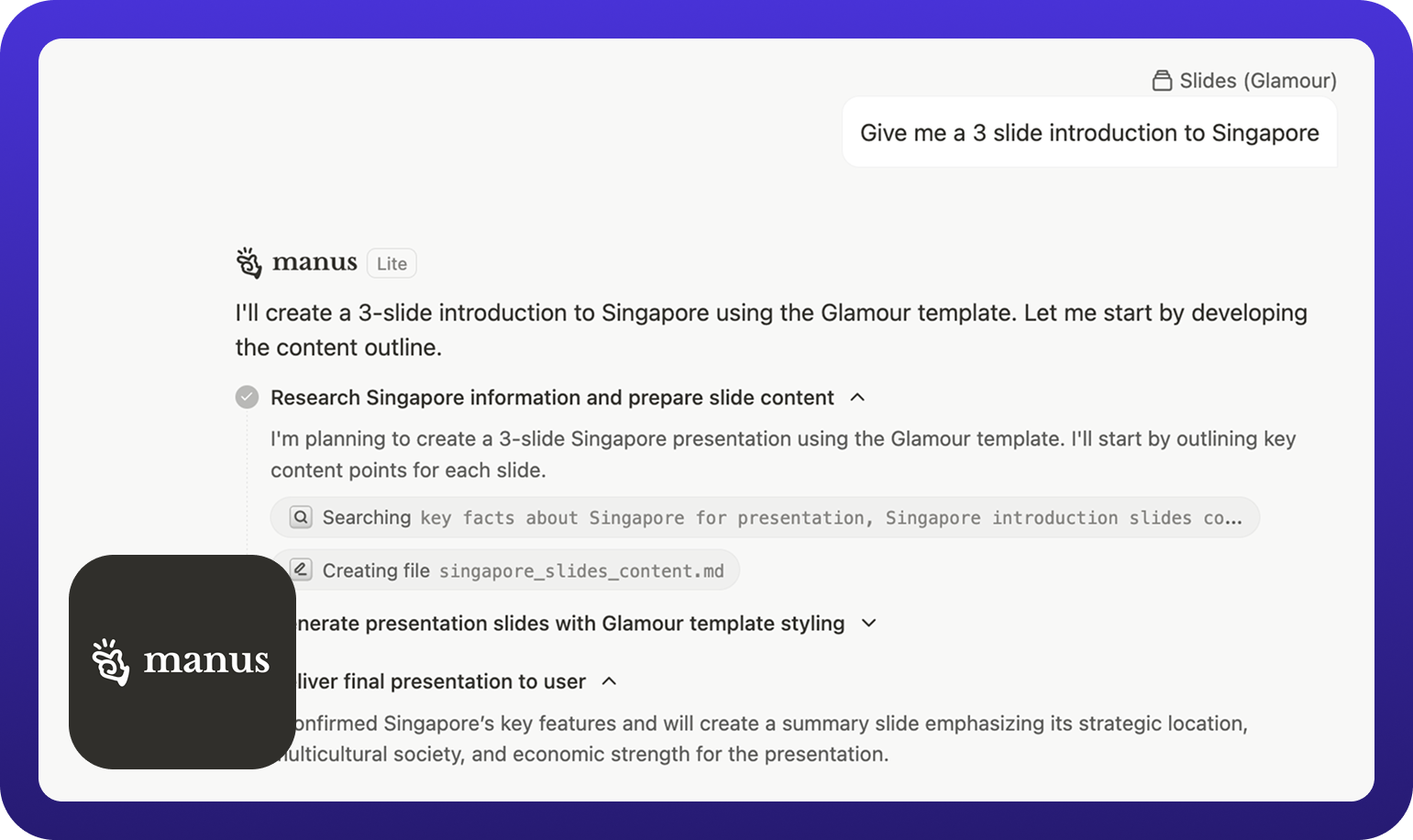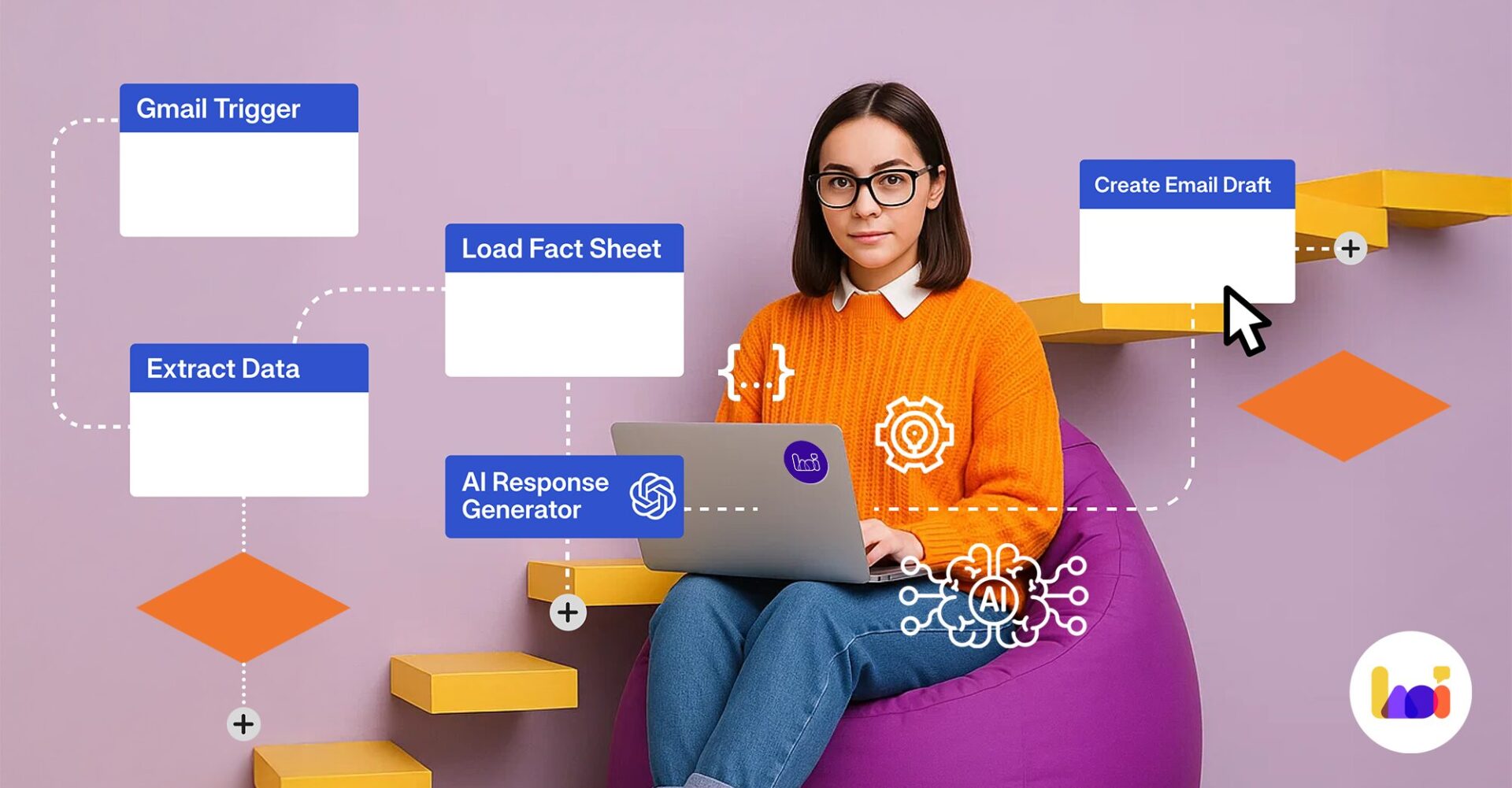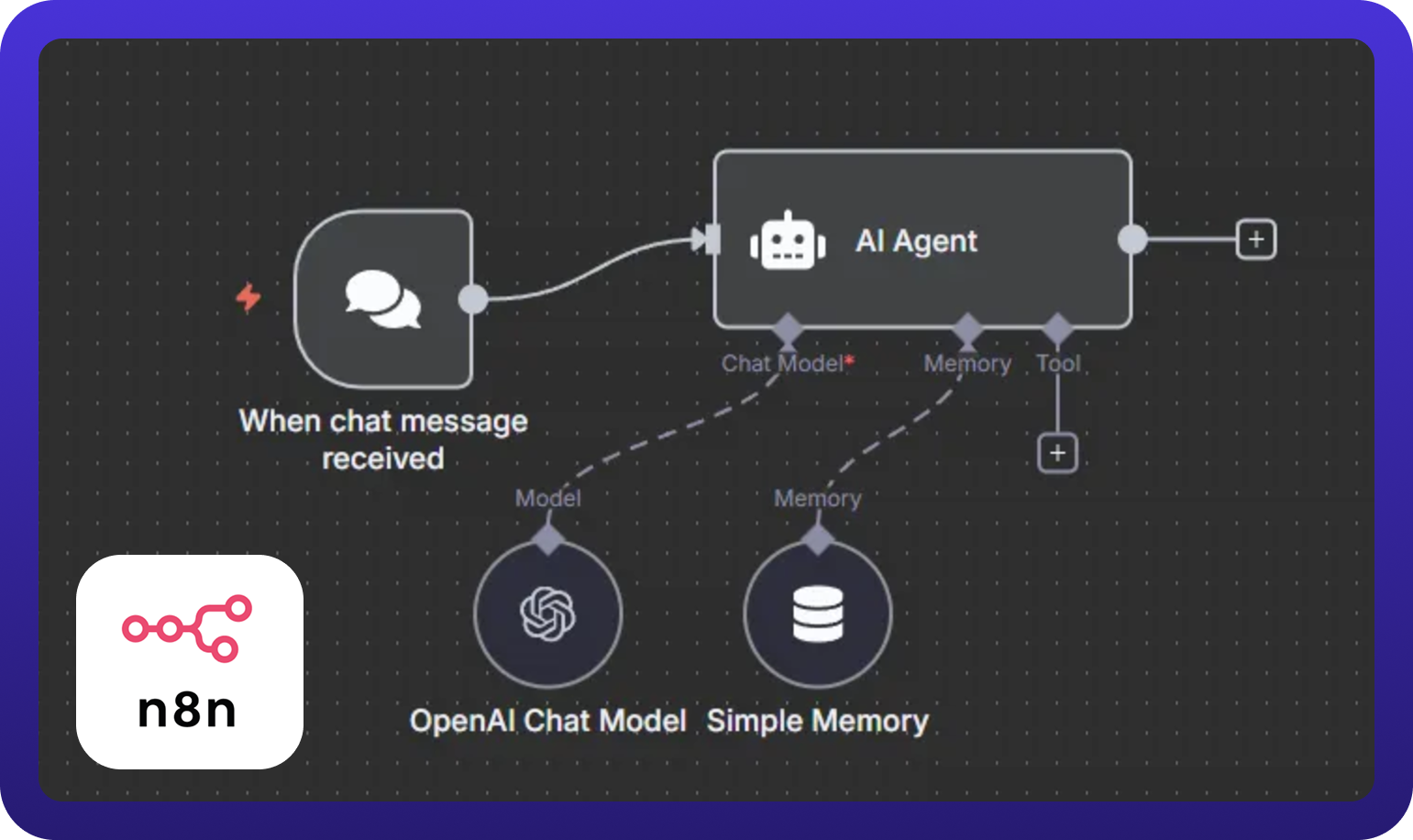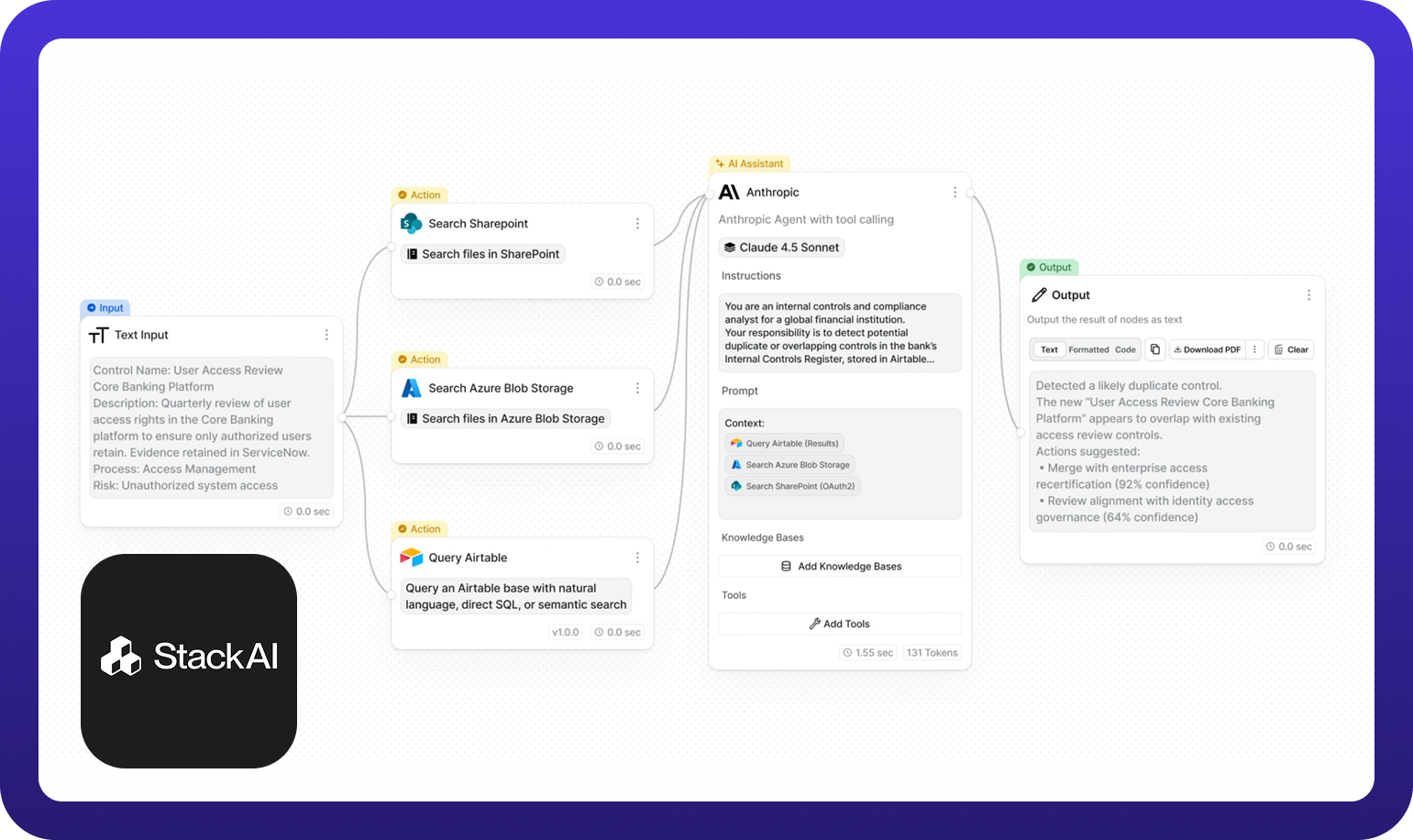Blog > Generative AI > Top 10 Agentic AI Workflow Builders for Singapore Professionals (2025 Guide)
Guide to The Best Agentic AI Workflow Builders for Singapore Professionals

AI agents are revolutionising the way we work. From automating tedious tasks to providing intelligent insights, these powerful tools are no longer the stuff of science fiction. But with so many new platforms emerging, how do you know which ones are right for you and your business?
In this comprehensive guide, we cut through the hype to bring you the top 10 Agentic AI workflow builders for Singapore professionals in 2025. Whether you’re a non-technical professional looking to automate your daily tasks or a developer aiming to build sophisticated AI applications, this list has something for you.
Key Takeaways From This Article:
- Three Ways to Use AI Agents: Learn the difference between using out-of-the-box agents, building with no-code tools and coding with frameworks.
- Top 10 Agentic AI Tools Reviewed: A detailed look at the best platforms for 2025, including Manus AI, n8n, Zapier, and LangChain.
- Find Your Perfect Fit: A comparison table and guide to help you choose the right tool based on your technical skills, budget, and goals.
- Actionable First Steps: A simple framework to start automating your work today.
What is an Agentic AI Workflow Builder?
An Agentic AI workflow builder is a platform that allows you to create and deploy autonomous AI agents that can perform tasks, make decisions, and interact with other systems on your behalf. Think of them as super-powered assistants that you can train to handle specific business processes.
While established automation platforms like Zapier have long followed a clear “if this, then that” logic, the landscape is evolving. Agentic AI workflow builders represent the next generation of automation, offering more flexibility and intelligence by understanding natural language and reasoning through complex problems.
They can understand natural language, reason through complex problems and adapt to changing circumstances. This makes them ideal for automating a wide range of tasks, from customer support and marketing to finance and operations.
For Singapore professionals, these tools are particularly valuable. As the nation pushes forward with its Smart Nation initiative, the ability to leverage AI-driven automation is becoming a critical skill for career growth and business success.
How to Choose the Right Agentic AI Workflow Builder
Before diving into our top 10 list, it’s important to understand how to evaluate these platforms for your specific needs. Here are some key factors to consider:
- LLM Integration: Does the platform support multiple Large Language Models (LLMs) like OpenAI’s GPT-4, Anthropic’s Claude, or Google’s Gemini? The more options you have, the more flexible your agents will be.
- No-Code/Low-Code Interface: How easy is it to build and manage workflows? A visual, drag-and-drop interface is ideal for non-technical users, while developers may prefer a more code-centric approach.
- Integrations: Can the platform connect to your existing tech stack? Look for integrations with popular tools like Google Workspace, Microsoft 365, Salesforce, and Slack.
- Security and Compliance: Does the platform offer robust security features and comply with data privacy regulations like Singapore’s Personal Data Protection Act (PDPA)?
- Pricing: Is the pricing model transparent and scalable? Many platforms offer a free tier or trial, so you can test them out before committing.
- Community and Support: Is there an active user community and responsive customer support to help you when you get stuck?
With these criteria in mind, let’s explore the top 10 Agentic AI workflow builders for 2025.
Three Ways to Utilise AI Agents in Your Work
Broadly, there are three main ways to bring the power of AI agents into your daily workflows:
- Use Out-of-the-Box AI Agents: These are pre-built agents designed for immediate use. They can be general-purpose, like a research assistant, or specific-purpose, designed for a single task like scheduling meetings.
- Build with No-Code AI Workflow Builders: These platforms provide a visual, drag-and-drop interface that allows you to create your own custom AI agents and workflows without writing any code.
- Build with Code-Based Frameworks: For those with programming skills, these frameworks offer maximum flexibility and control to build highly customised AI agents from the ground up, typically using Python.
This guide will explore the top tools in each of these categories, helping you find the perfect fit for your needs, technical skills, and business goals.
Category 1: Out-of-the-Box AI Agents

These tools are ready to go from day one. You simply sign up and start delegating tasks. They are perfect for individuals and teams who want to see immediate productivity gains without a steep learning curve.
General-Purpose Agents
1. Manus AI

Best For: Professionals and teams looking for an integrated learning and building experience.
Pricing: Free tier available, with paid plans for more advanced features.
Key Features:
- Seamless integration with Heicoders Academy’s curriculum.
- Autonomous AI agent capable of complex reasoning and task execution.
- No-code interface designed for non-technical users.
- Directly taught and used in Heicoders’ GA100 course.
Pros & Cons:
- Pros: The only platform that’s fully integrated into a structured learning programme, providing both the tool and the training to use it effectively.
- Cons: As a newer platform, it may have fewer integrations than more established players.
Use Case Example: A marketing professional in Singapore uses Manus AI to automate their weekly competitor analysis, saving them hours of manual research.
Why It Stands Out: As the official AI agent partner of Heicoders Academy, Manus AI is unique because it’s fully integrated into our Generative AI course (GA100). It’s a powerful general-purpose agent that can research, write, analyse data, and more, all while serving as a hands-on learning tool.
2. Lindy AI
Best For: Non-technical users who want a simple, conversational interface.
Pricing: Paid plans start at $49/month.
Key Features:
- Simple, trigger-action canvas for building workflows.
- Over 50 integrations with popular business apps.
- AI triggers that can kick off workflows based on complex events.
Pros & Cons:
- Pros: Very easy to learn and use, even for complete beginners.
- Cons: May not be as powerful or flexible as more advanced platforms.
Use Case Example: A project manager in Singapore uses Lindy AI to automate their meeting scheduling and follow-up tasks.
Why It Stands Out: Lindy acts as an AI assistant that you can talk to in plain English. It excels at personal productivity tasks like email drafting, meeting scheduling, and summarising documents.
Specific-Purpose Agents
While many tools focus on building, some offer pre-built specific agents. For this guide, we focus on platforms that allow creation, but tools like Lindy can be configured for very specific tasks, blurring the lines.
Category 2: No-Code AI Workflow Builders

This is the fastest-growing category, empowering non-technical professionals to become AI automators. These platforms use visual interfaces to connect different apps and AI models, allowing you to design complex workflows without writing a single line of code.
3. Gumloop
Best For: Beginners and marketing teams.
Pricing: Free plan available, with paid plans starting at $37/month.
Key Features:
- Intuitive no-code, visual workflow builder.
- Gummie AI assistant helps you build agents with natural language.
- Wide range of templates for marketing, sales, and operations.
Pros & Cons:
- Pros: Extremely user-friendly and great for those new to AI automation.
- Cons: The platform is still growing, so the community ecosystem is smaller than more established tools.
Use Case Example: A small business owner in Singapore uses Gumloop to create an AI agent that automatically responds to customer enquiries on their website.
Why It Stands Out: Gumloop’s drag-and-drop interface is incredibly intuitive, making it one of the easiest platforms to learn. It’s great for creating marketing automation, lead generation bots, and social media content workflows.
4. n8n

Best For: Technical users and developers who prefer a visual workflow builder.
Pricing: Free and open-source, with paid cloud plans available.
Key Features:
- Open-source platform that can be self-hosted.
- Highly customisable with the ability to write custom code.
- Strong community support and extensive documentation.
Pros & Cons:
- Pros: Unmatched flexibility and control for developers.
- Cons: Steeper learning curve and requires technical expertise.
Use Case Example: A software developer in Singapore uses n8n to build a custom AI agent that integrates with their company’s internal tools and databases.
Why It Stands Out: n8n is open-source and can be self-hosted, offering unparalleled control and privacy. It has a powerful visual interface but also allows for custom code snippets, bridging the gap between no-code and code. It is also one of the key open-source tools taught in Heicoders’ Generative AI course (GA100).
5. Zapier
Best For: Existing Zapier users and businesses with a wide range of app integrations.
Pricing: Free plan available, with paid plans for more advanced features.
Key Features:
- Massive library of over 5,000 app integrations.
- Familiar and easy-to-use interface.
- New AI features, including the ability to add ChatGPT actions to Zaps.
Pros & Cons:
- Pros: The industry standard for automation with an unparalleled number of integrations.
- Cons: Its AI capabilities are not as advanced as AI-native platforms.
Use Case Example: A marketing manager in Singapore uses Zapier to create a Zap that automatically generates a social media post with ChatGPT whenever a new blog post is published.
Why It Stands Out: While known for traditional automation, Zapier has integrated AI into its platform, allowing you to add intelligence to your existing “Zaps.” With over 5,000 app integrations, its connectivity is unmatched.
6. Make
Best For: Visual thinkers and those who need complex, multi-step workflows.
Pricing: Free plan available, with paid plans for more advanced features.
Key Features:
- Powerful and intuitive visual workflow builder.
- Advanced features like error handling and data manipulation.
- Integrated AI capabilities for more intelligent automations.
Pros & Cons:
- Pros: The visual interface makes it easy to understand and build complex workflows.
- Cons: Can have a steeper learning curve than simpler tools like Zapier.
Use Case Example: An operations manager in Singapore uses Make to create a visual workflow that automates their entire order fulfilment process, from receiving an order to shipping the product.
Why It Stands Out: Make’s visual interface is one of the most intuitive and powerful on the market, allowing you to see your entire workflow in a single view. It’s excellent for complex processes that require multiple branches and conditional logic.
7. Stack AI

Best For: Enterprise companies and SMEs looking for a robust, scalable platform.
Pricing: Free plan available, with paid plans starting at $199/month.
Key Features:
- Enterprise-grade security and compliance features.
- Large library of templates for various industries, including healthcare and finance.
- Designed for building and deploying complex AI applications.
Pros & Cons:
- Pros: A powerful and scalable platform trusted by large organisations.
- Cons: Can be expensive for smaller businesses.
Use Case Example: A financial institution in Singapore uses Stack AI to build an AI agent that automates fraud detection and compliance checks.
Why It Stands Out: Stack AI is designed for business-critical applications, offering features like data privacy controls, team collaboration, and the ability to connect to enterprise systems. It’s a go-to for building internal tools and customer-facing AI applications.
8. Relay.app
Best For: Agencies, service providers, and customer success teams.
Pricing: Free plan available, with paid plans starting at $11.25/month.
Key Features:
- Clean and simple interface designed for team collaboration.
- Inspiration gallery with examples of workflow automations.
- Affordable pricing for small to medium-sized teams.
Pros & Cons:
- Pros: Great value for money and ideal for client-facing workflows.
- Cons: The free plan is quite limited in terms of LLM credits.
Use Case Example: A digital marketing agency in Singapore uses Relay.app to automate their client onboarding process, from sending welcome emails to creating project folders.
Why It Stands Out: Relay.app focuses on human-in-the-loop workflows, making it perfect for tasks that require collaboration between humans and AI. It’s great for client onboarding, support ticket resolution, and other service-oriented processes.
Category 3: Code-Based AI Workflow Frameworks

For developers who want maximum power and customisation, these frameworks provide the building blocks to create AI agents from scratch using Python.
9. LangChain
Best For: Python developers building custom AI applications.
Pricing: Open-source framework is free; LangSmith platform has a free developer plan and paid plans for teams.
Key Features:
- Open-source framework for building LLM-powered applications.
- LangSmith platform for debugging, testing, and monitoring agents.
- Strong developer community and extensive documentation.
Pros & Cons:
- Pros: The industry standard for developers building with LLMs, offering immense flexibility and power.
- Cons: Requires coding knowledge and is not a no-code platform.
Use Case Example: A tech startup in Singapore uses LangChain to build the core of their AI-powered product, leveraging its flexibility to create a unique user experience.
Why It Stands Out: LangChain is the most popular open-source framework for developing applications powered by language models. It provides a standard interface for chaining together LLMs, data sources, and other tools, giving developers complete control over their AI agents.
10. Vellum.ai
Best For: Developers and teams focused on prompt engineering and productionising LLM applications.
Pricing: Free plan available, with paid plans starting at $25/month.
Key Features:
- Advanced tools for designing, testing, and versioning prompts.
- Workflow orchestration for building multi-step AI agents.
- Collaboration features for teams.
Pros & Cons:
- Pros: Excellent for fine-tuning the performance of LLMs and building high-quality AI applications.
- Cons: More focused on the development side of AI and less on simple task automation.
Use Case Example: An AI development team in Singapore uses Vellum.ai to rigorously test and evaluate different prompts and models for their new AI-powered feature.
Why It Stands Out: Vellum provides a suite of tools specifically for developing, testing, and deploying enterprise-grade LLM applications. It’s less of a workflow builder and more of a production toolkit, perfect for teams that are serious about shipping reliable AI products.
Comparison Table
| Tool | Category | Best For | Learning Curve | Key Strength |
|---|---|---|---|---|
| Manus AI | Out-of-Box | Learners & Professionals | Very Low | Integrated Learning |
| Lindy AI | Out-of-Box | Non-Technical Users | Very Low | Simplicity |
| Gumloop | No-Code Builder | Beginners & Marketing | Low | Ease of Use |
| n8n | No-Code Builder | Technical Users | Medium | Open-Source & Control |
| Zapier | No-Code Builder | Existing Users | Low | 5,000+ Integrations |
| Make | No-Code Builder | Visual Thinkers | Medium | Visual Workflow Design |
| Stack AI | No-Code Builder | Enterprise & SMEs | Medium | Scalability & Security |
| Relay.app | No-Code Builder | Agencies & Teams | Low | Human-in-the-Loop |
| LangChain | Code-Based | Python Developers | High | Flexibility & Power |
| Vellum.ai | Code-Based | Production Teams | High | Prompt Engineering |
How to Get Started with AI Workflow Automation
Ready to dive in? Here’s a simple 5-step framework to start your AI automation journey:
- Identify a Pain Point: Start with a repetitive, time-consuming task in your daily work.
- Choose Your Category: Based on your technical skills, decide whether to use an out-of-the-box tool, a no-code builder, or a code-based framework.
- Select a Tool: Pick a tool from the list above that matches your needs and budget.
- Start Small: Automate a single, simple task first to learn the platform.
- Iterate and Expand: Once you’re comfortable, gradually build more complex workflows and integrate them into your daily routine.
Learning AI Workflow Automation at Heicoders Academy
Feeling overwhelmed? You don’t have to navigate this new landscape alone.
At Heicoders Academy, our Generative AI course (GA100) is designed to give you the skills and confidence to master AI-driven automation.
You’ll get hands-on experience with industry-leading tools like Manus AI and n8n, learning how to build practical, real-world solutions that can transform your career and business.
Our expert instructors will guide you every step of the way, ensuring you walk away with the skills and confidence to apply what you’ve learned in your own career.
Conclusion
The era of AI-driven automation is here, and it’s more accessible than ever. Whether you’re using a simple out-of-the-box agent, designing workflows with a no-code builder, or coding a custom solution with a framework like LangChain, the power to automate your work is in your hands.
The tools we’ve covered in this guide represent the best of what’s available today, offering a range of options for every need and budget. The key is to start today, learn continuously, and embrace the incredible potential of AI to augment your human creativity and productivity.
The age of the AI-powered professional is here. Are you ready to be a part of it?

Upskill Today With Heicoders Academy
Secure your spot in our next cohort! Limited seats available.

